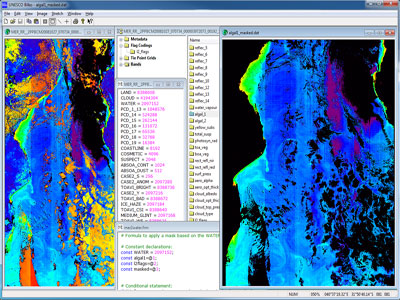
|
DevCoCast ocean colour products from the Mozambique ChannelAuthors: Val Byfield, Stewart Bernard and Christo Whittle
|

|
|
Using an example from the Mozambique Channel this lesson shows how different ocean colour sensors and algorithms may obtain different chlorophyll concentrations from the same satellite measurements, and how to choose the most appropriate product. The lesson looks at the differences between algorithms for use in turbid coastal waters (case 2) and algorithms designed for the open ocean (case 1). By the end of these lessons you should be able to:
Download the lesson: |

Screenshot from the lessons showing the Case 1 chlorophyll product, with no flags applied (left), the N1 data format, flag descriptions and the formula used to apply land and cloud masks (middle), and the result of applying these flags (right). |
 Previous: Namibia bloom
Previous: Namibia bloom
|
Last update: 27 November 2019 | Contact |  |
Site Policy |
Next: Hovmöller plots

|



